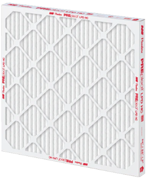HEPA Filter materials are essential for high-efficiency air filtration, used in homes, hospitals, laboratories, and industrial environments. There are several types of Hepa Filter materials, each designed for specific applications and performance levels. The most common HEPA material is fiberglass, which provides excellent particle capture efficiency, especially for fine dust, pollen, and smoke particles. Another type is synthetic microfibers, often made from polypropylene or polyester, which offer high durability, moisture resistance, and consistent filtration performance. Activated carbon HEPA material combines traditional HEPA fibers with activated carbon layers to remove odors and harmful gases along with particulate matter.

Additionally, metal mesh-supported HEPA materials are designed for industrial applications, where mechanical strength and heat resistance are required. Selecting the right HEPA Filter material depends on the target particle size, airflow requirements, and specific environment. Understanding these types helps businesses and consumers choose Filters that maximize air quality while ensuring efficiency and longevity.